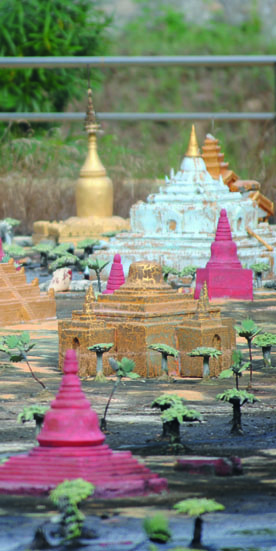Appropriating Sacred Spaces: An investigation of Bagan's transformed landscape
Dr. Clara Rellensmann
Betreuung: Prof. em. Dr. Leo Schmidt

Bagan is one of Asia’s most prominent Buddhist sites. Up until today, this sacred landscape of about 25 square kilometres remains an important centre of Theravada Buddhism. The site comprises more than 3.000 Buddhist monuments ranging from small stupas and temples to monastic complexes and several enormous stucco-covered structures originally built during the 11th to 13th centuries, when Bagan was flourishing as the capital of the first Myanmar kingdom. However, following the collapse of the kingdom towards the end of the 13th century most of the religious structures fell into disrepair. Only very few of the major temples continued to be used and were continuously restored over time. Thus, for many centuries, Bagan was a landscape of ruins. However, from 1995 to 2012, Myanmar’s back then military regime directed an extensive reconstruction programme at the site, during which more than a thousand religious monuments were partially or fully rebuilt. In many cases, the design of the new monuments was left up to the building contractors rather than being based on historical evidence.
International media as well as the international expert community have repeatedly scolded the Myanmar military regime for what is perceived as anachronistic construction and unprofessional conservation work at the historic site. The reconstructions continue to spark off debates, especially, as Bagan is being nominated for World Heritage listing.
In this context, the research will provide a nuanced assessment of the reconstructions that goes beyond their physical impact on the archaeology of the site. Its investigation aims at authenticating this reconstructed landscape as a recent time layer in Bagan’s planning and construction history, a spatial manifestation that reflects past and present religious cultural practices as well as national politics and identities.
This project cooperates with the NSERC Heritage Engineering Program, Carleton University, Ottawa, Canada.
The dissertation was published at BTU Cottus-Senftenberg in 2022 under the title "Appropriating sacred spaces: an investigation of Bagan's transformed landscape".
Researcher: Clara Rellensmann
Clara Rellensmann is an associated doctoral student at the DFG Research Training Group 1913 "Cultural and Technological Significance of Historic Buildings".
